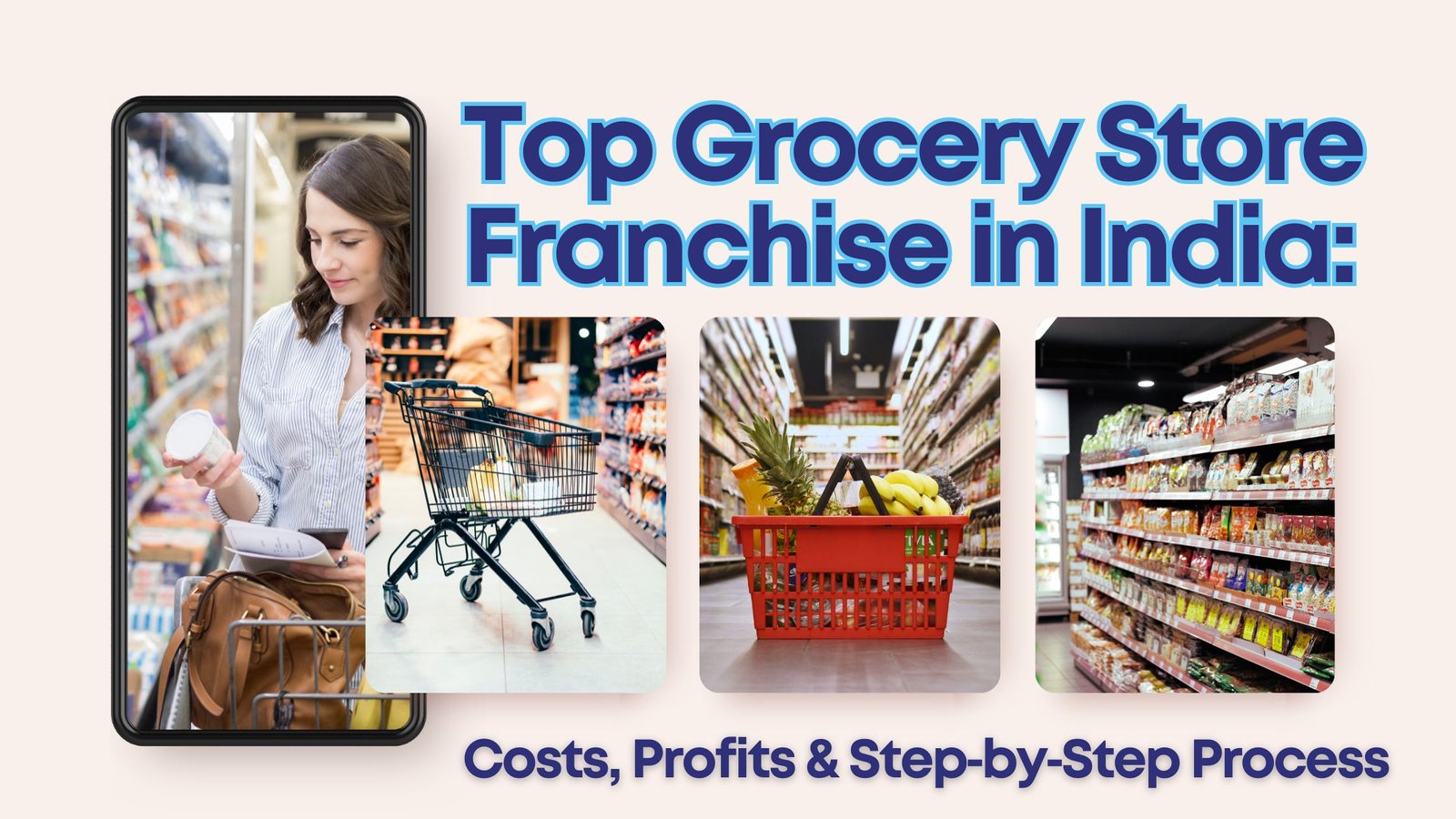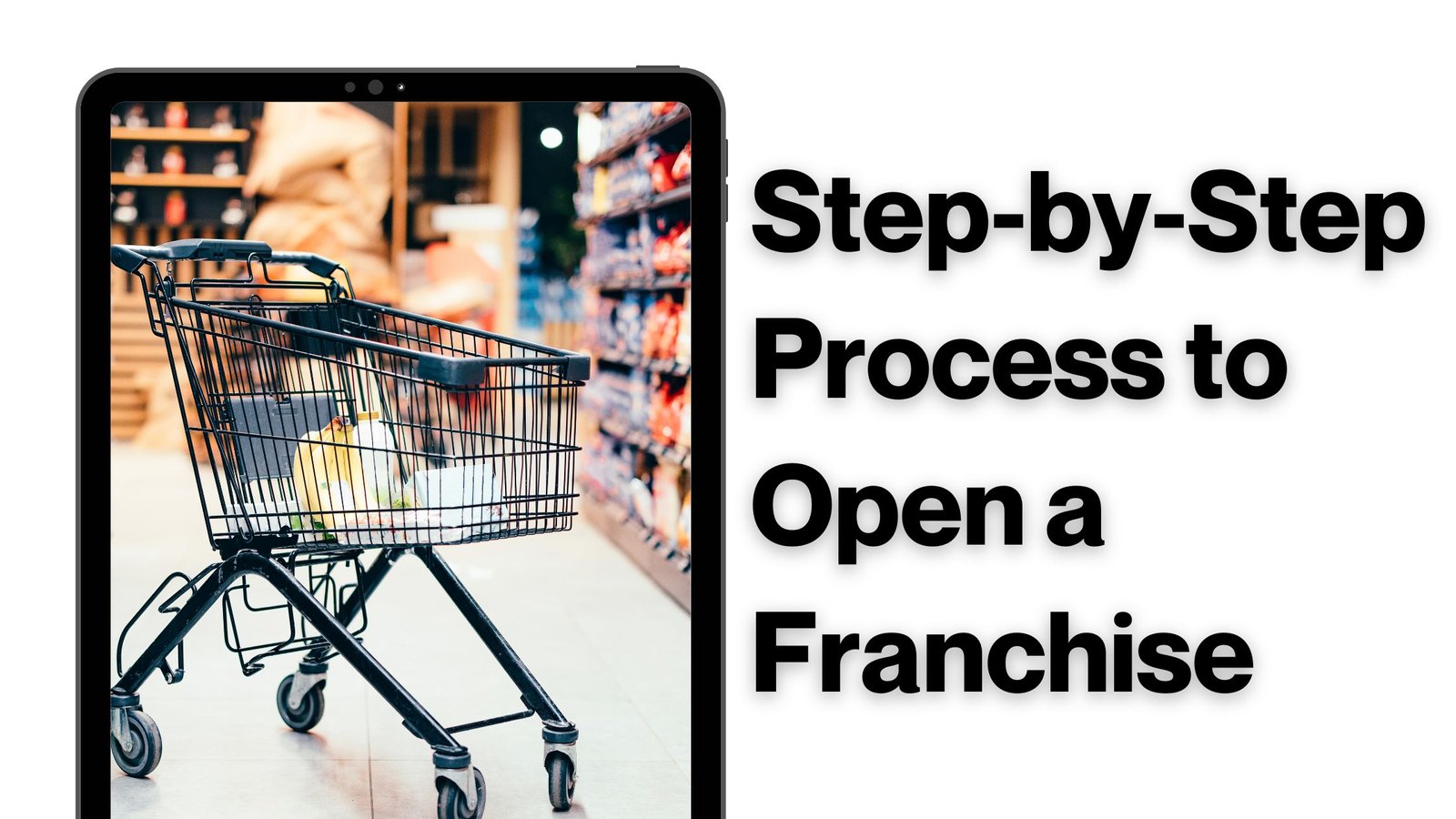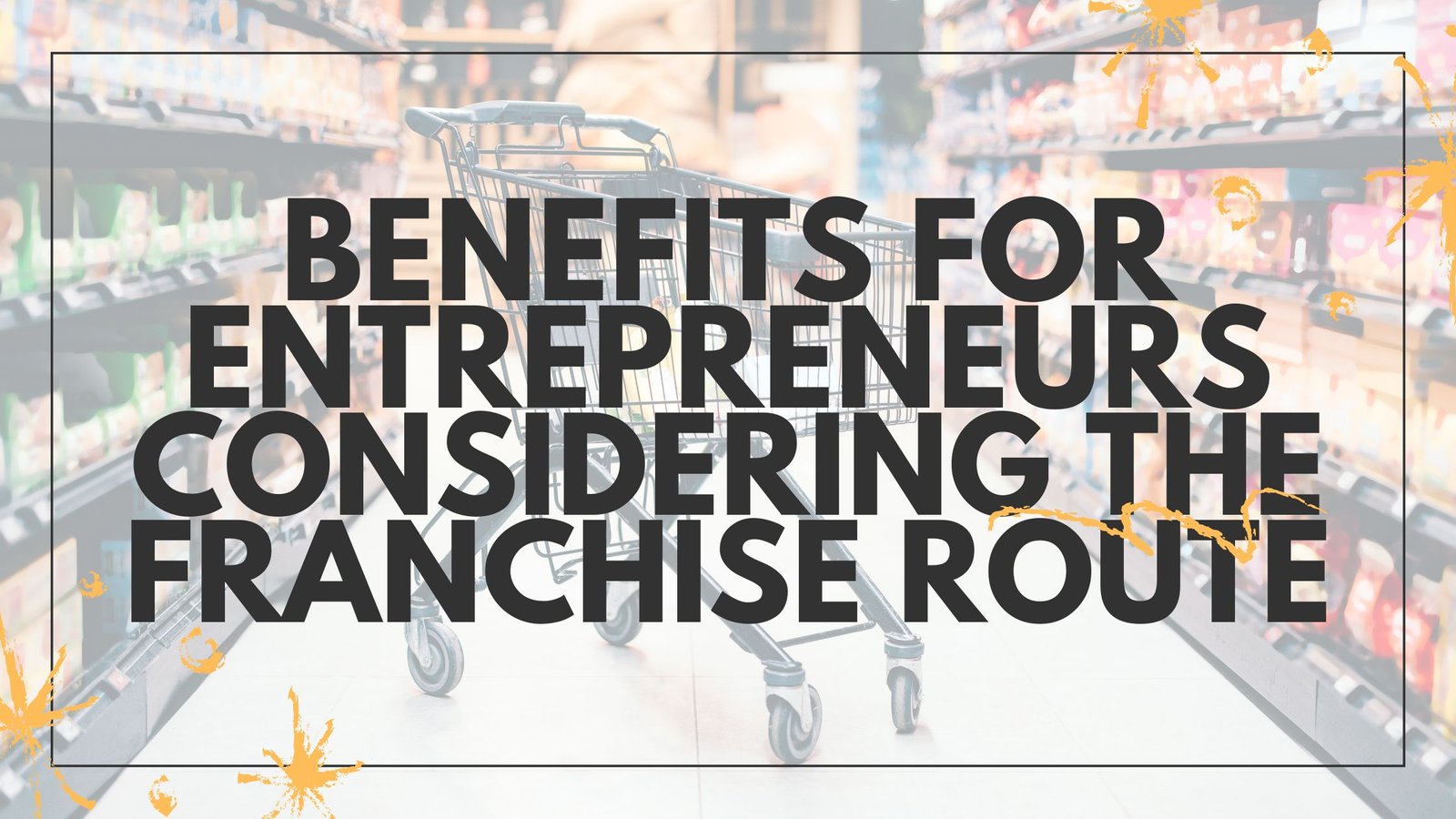Grocery Store Franchise in India: Discover the full cost, support, pros & cons—find clarity and confidence before launching your supermarket franchise journey.
Deciding whether to invest in a Grocery Store Franchise in India can feel overwhelming, especially when you’re worried about high setup costs, uncertain returns, location challenges, or franchise terms. This blog aims to clear those doubts and help you make an informed choice.
Read on for real insights into investment ranges, top brands, operational support, and frequently asked questions—all to help you feel confident before committing.
Why Choose a Grocery Store Franchise in India
India’s food & grocery retail market is worth around US $719 billion approx and is projected to grow about 4% annually through 2030.
It remains the largest retail segment in the country. Franchising opens the door to an organized retail model backed by established brands.
Opening your freelance grocery shop alone can be risky and resource-intensive. A franchise provides a proven brand, standardized operations, and supplier access, which reduces the learning curve and operational hassles.
Step‑by‑Step Process to Open a Franchise
Selecting the Brand & Format
Evaluate your budget, location size, target consumer profile, brand presence, and support model. For tight budgets, G‑Fresh or SuperK may suit; for higher ambition, consider More or 7Heven.
Site Evaluation & Location Choice
Choose high pedestrian areas or neighborhoods with unmet demand. Requirements can be 500 sq ft mini formats or up to 10,000 sq ft for a full-scale supermarket.
Signing Agreements & Training
You’ll enter into a 3–5‑year franchise agreement with the brand. Training programs typically cover operations, inventory ordering, billing software, merchandising, and marketing launch support.
Support & Operations from Franchisors
Training, Marketing & Supply‑chain Support
Most franchisors offer end‑to‑end offerings: central procurement, branded merchandise, marketing campaigns, regular audit visits, and software systems.
Ongoing Royalty & Fees Structure
Royalty ranges from 1‑5% of gross turnover or a fixed fee—be clear about this before signing the agreement.
Benefits for Entrepreneurs Considering the Franchise Route
Brand Recognition & Proven Model
Established brand value delivers customers from day one, helping build trust and loyalty quickly.
Bulk Purchase Power & Savings
Franchisees tap into centralized supplier deals, yielding lower purchase prices and higher margins.
Reduced Business Risk versus Independent Store
With training, standardization, and ongoing support, franchisees face lower setup learning curves and operational errors.
Common Concerns & How They Can Be Overcome
High Upfront Costs vs. ROI
While initial setup may feel high, veteran franchisees often report breakeven within 12–24 months if footfall and margins are well‑managed.
Lease & Location Challenges
Prime location rental can eat your margins. Negotiate lease terms and factor rent into your feasibility study.
Royalty Burden & Margins
If royalty is percentage‑based, optimize inventory and minimize shrinkage to maintain profitability.
Real‑World Success Stories from Franchisees
G‑Fresh Mart’s Low‑Investment Entry
Multiple first-time investors have launched profitable mini‑mart outlets for under ₹10 lakh, leveraging local demand and lean operations.
Hearty Mart’s Rural‑Urban Model
By focusing on smaller towns and villages, Hearty Mart empowers franchisees with ₹5–10 lakh setup and strong local loyalty—proving profitable even outside metro clusters
FAQs about Grocery Store Franchise in India
1. What is the minimum investment needed?
You can start with ₹5 lakh for compact formats like G‑Fresh or Hearty Mart; full‑scale supermarket models often require ₹40‑70 lakh or more.
2. How long does it take to break even?
Most franchisees reach break‑even in 12–24 months if standard operations are followed, and the location is well‑chosen.
3. Do I need prior experience in retail?
Not necessarily. Franchisors provide training and support even for first‑time owners
4. What licenses are required?
You need a Shop & Establishment license, municipal trade license, FSSAI (if food), and GST registration—costs range up to ₹2 lakh depending on the state.
5. What are typical royalty/fees?
Royalty can be 1–5% of turnover or fixed monthly payments. Software and marketing fees may be extra.
6. How do franchise costs vary by brand?
Budget formats like G‑Fresh or SuperK: ₹5–20 lakh. Mid-tier chains like 7Heven, Street24: ₹10–30 lakh. Large chains like More, Spencer’s, DMart: ₹40–70 lakh or more.
Conclusion: Is a Grocery Store Franchise in India Right for You?
If you’re keen to avoid the high risk of starting an independent store and appreciate structured support, a Grocery Store Franchise in India can be a smart entry point into retail. You’ll benefit from trusted branding, supply chain efficiency, and hands‑on guidance. Still, ensure you perform thorough location analysis, budget realistically, and read your franchise agreement carefully.
With a franchise, you’re not just starting a store—you’re joining a proven retail ecosystem. That clarity and support often make the difference between doubt and confident entrepreneurship.



